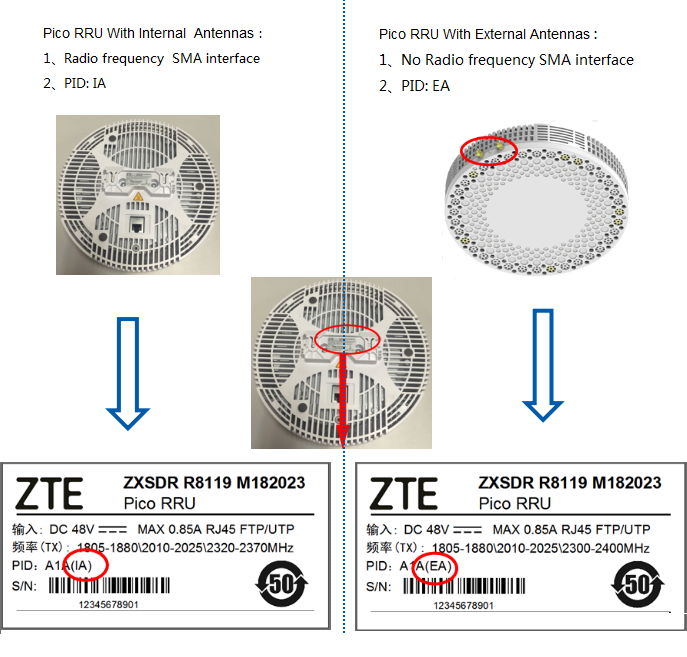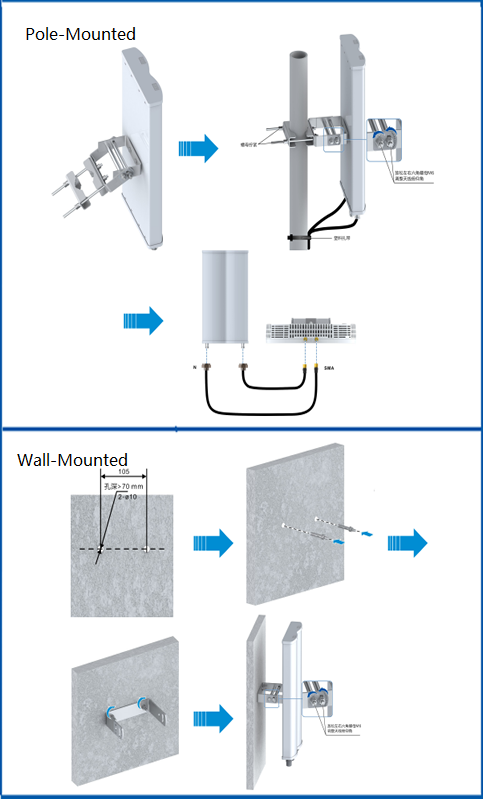
Pico RRU Antenna Installation Guide



In scenarios with GSM signal feeding, the Pico RRU with external antennas needs to be connected to a dual-channel antenna because only the main-antenna interface outputs GSM signals.
In scenarios without GSM signal feeding, the following deployment solution is recommended.


Installation Component Overview
.jpg)
Antenna feeder jumper




By default, the Pico RRU with internal antennas is delivered. If the Pico RRU with external antennas is required, specific notes should be made.
In pole-mounted installation mode, the pole diameter ranges from 40 mm to 95 mm, and the antennas must be installed vertically.
The Pico RRU with internal antennas and the Pico RRU with external antennas cannot be used interchangeably. The Pico RRU with external antennas must be connected to external antennas to output signals.
Of the two SMA interfaces of the Pico RRU with external antennas, one is the main-antenna interface while the other is the diversity-antenna interface. In the case of only one antenna channel being connected, only the main-antenna interface can be connected (see the following figure), and the diversity-antenna interface is connected to the load or the data configuration is modified to single-TX channel.
In scenarios with GSM signal feeding, only the main-antenna interface outputs GSM signals and the diversity-antenna interface does not output GSM signals. Therefore, for scenarios with GSM signal feeding, it is recommended that dual-channel antennas be used. The single-channel antenna is connected to the main-antenna interface only.